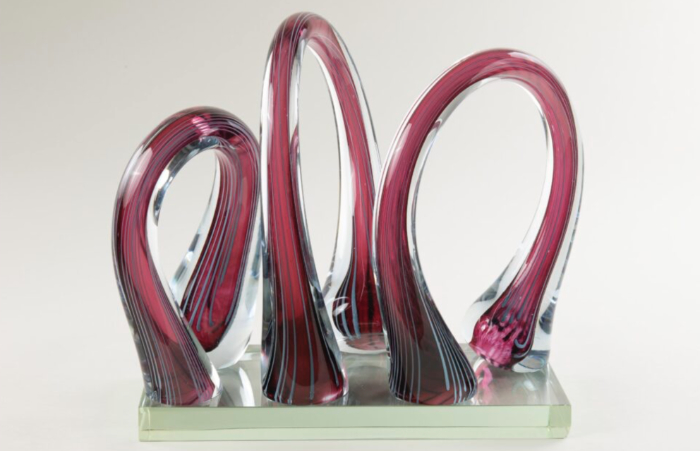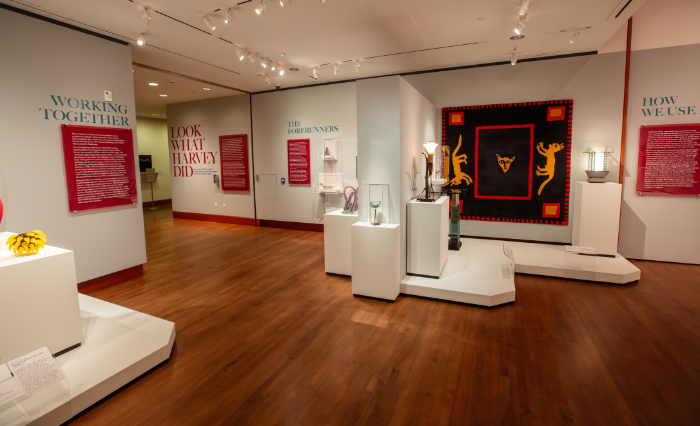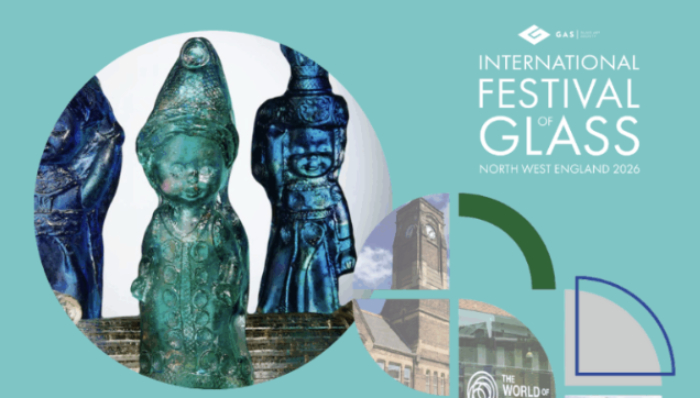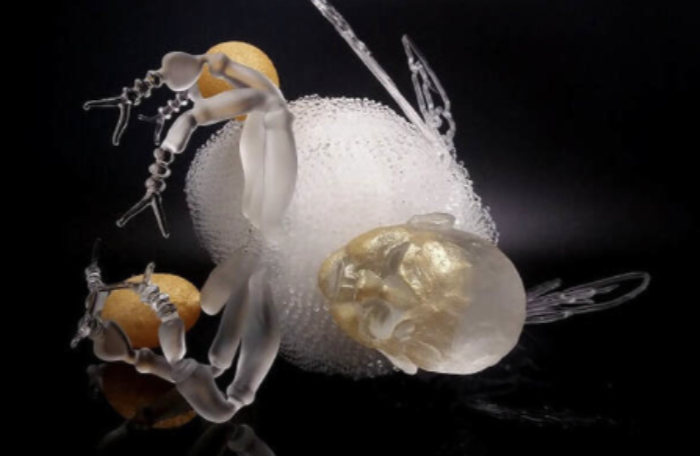
Exhibition charting studio glass evolution features Harvey K Littleton
A new exhibition traces the evolution of the studio glass movement across six decades and includes glass made by US studio glass pioneer and educator Harvey K Littleton.
Approximately 40 works have been selected from the Simona and Jerome Chazen studio glass collection for the ‘Look What Harvey Did: Harvey K. Littleton’s Legacy’ exhibition, with each piece chosen to demonstrate technical and conceptual advancements in glassmaking from functional ware to fine art.

The show has launched at the Chazen Museum of Art, located at the University of Wisconsin-Madison, US.
Littleton’s works appear alongside renowned artists who have followed his lead, including Michael Aschenbrenner, Dale Chihuly, Daniel Clayman, Dan Dailey, Clifford Rainey, Ginny Ruffner, Lino Tagliapietra and many others. The exhibition also explores other developments in the field, such as collaboration and the changing demographics of glass artists.
Even though the collection spans primarily the last decades of the 20th century, the show promises an illuminating perspective on how Littleton’s advocacy of glass as a vehicle for contemporary expression evolved into a recognised movement that continues to impact 21st-century art.
Beginning his affiliation with the University of Wisconsin-Madison in 1951 as head of ceramics, Littleton organised the seminal 1962 Toledo Museum of Art workshops that enabled artist-craftsmen in ceramics to explore glass. Shortly thereafter, he established America’s first university-level, hot glass programme on the university’s campus.
Until Littleton’s intervention, except for a few forerunners, glass was used primarily in factories for functional wares. Littleton’s approach eliminated the rift between designer and fabricator that invariably plagued production in these shop settings over the centuries, while empowering artists to work with glass within the confines of their studios.
During the early years of studio glass, in their respective ways, artists in the Chazen collection – such as American artist Dale Chihuly, Czech artists Stanislav Libenský and Jaroslava Brychtová and Italian artist Lino Tagliepietra – demonstrated the necessity for collaboration and teamwork.
Other artists, such as Howard Ben Tré and Bertil Vallien, incorporated specific resources from particular glass factories into their own studio practices. Littleton’s call for glass artists to reduce emphasis on technique in favour of content was heard internationally.
American Michael Aschenbrenner and Australian Scott Chaseling address topical issues from the last decade of the 20th century in their works. Concept and narrative are now central to glass art.
In addition, the demographics of glassmaking have changed over the years. Pioneers such as Mary Shaffer, Toots Zynsky, and Therman Statom have paved the way for women and people of colour in the contemporary glass field. In these and many other ways, the exhibition is a persuasive testament to the far-reaching vision of Harvey K Littleton.
‘Look What Harvey Did’ is guest-curated by Davira S Taragin for the Chazen Museum of Art. It is on until 16 August 2024.
The University of Wisconsin’s Chazen Museum of Art is at 750 University Avenue, Madison, WI 53706, US. Find out more via the website.
Image: Harvey K Littleton’s ‘Triple Loops’ (1978) features furnace-worked barium/potash glass with Kugler colour. Photo courtesy of Simona Chazen.

